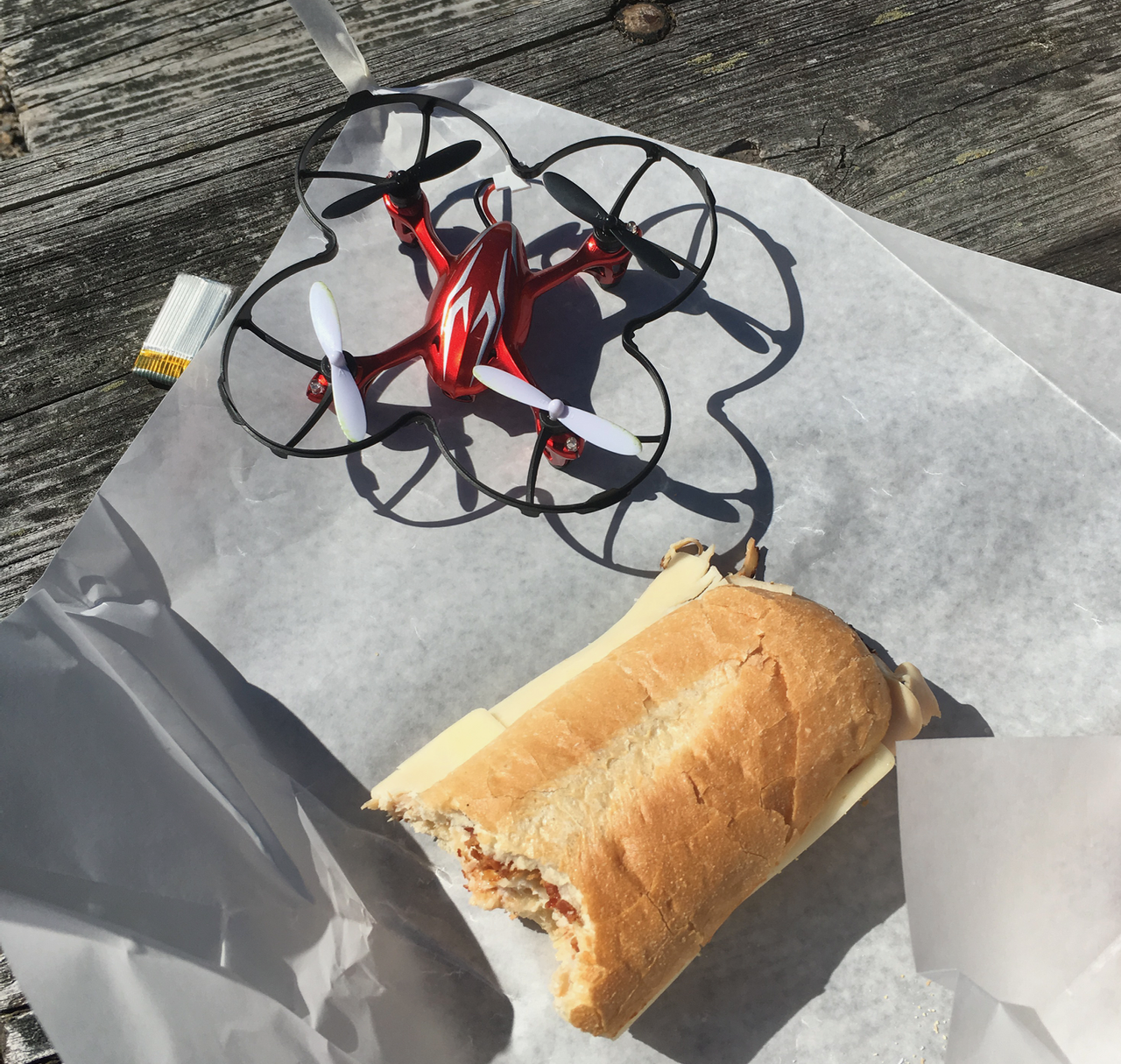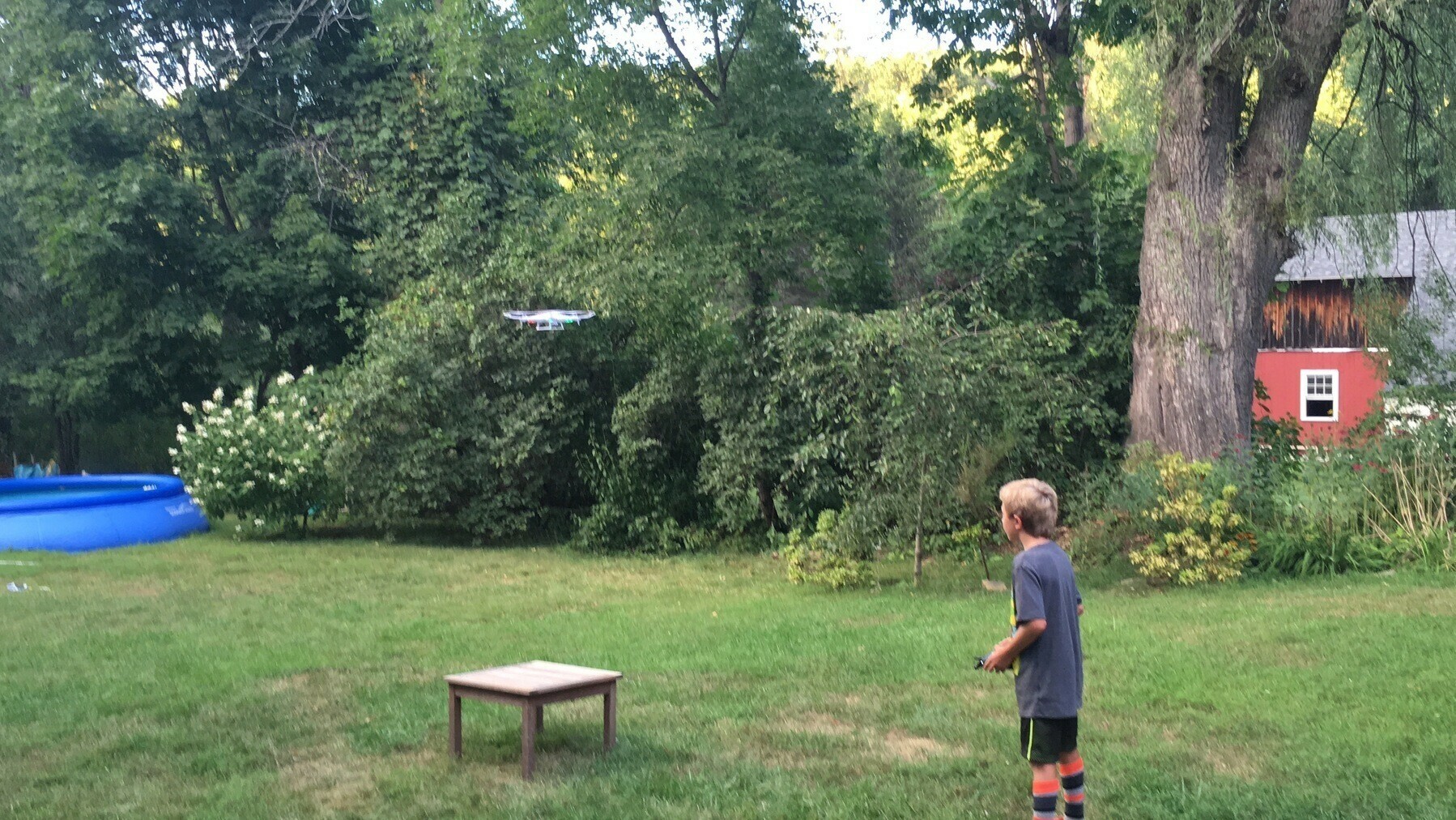Video: Memorial Day 2017
A short video from a party we had over Memorial Day weekend.

A short video from a party we had over Memorial Day weekend.
Visited friends this weekend and flew around their yard which had a ton of trees. It was good practice.
I went out to find a new flying spot before the rain started and ran into some other FPV drone pilots. Here is some video from my afternoon flights.
Beautiful flying at the mouth of the Merrimack river in Salisbury.
I found a new flying spot, which was made better by some amazing weather and light conditions.
I have been flying the Holybro Shuriken 180 for the last few months and it has been a great little quadcopter. Unfortunately I decided to fly in winter and crashed into the snow. At first everything was fine, but a couple days later I went for another flight and it just fell out of the sky.
Continuing on from my last post, I received my Hubsan X4 H107C from Amazon and immediately took out it out to the backyard for its maiden flight. Right away it was noticeably smaller and more dense than the Syma X5C. I inserted the batteries and upon turning the transmitter on it bound without incident. I then repeated the learning procedure I had done with the Syma and took it up about six feet before returning to the ground. Since it has brushless motors rather than a gear system it definitely was a bit more agile in the air and had better lift. I only had one battery at that time so after about 8 minutes of practice I had to retreat inside to charge the battery.
The next time I flew I wanted to test out the camera on it, but unlike the Syma this one only supports video and the switch to start and stop recording is on the quad itself. So you always end up recording your entire flight, it is also important to note that you have to make sure you stop the recording before unplugging the battery, or you will not get any movie files. At first the camera didn’t seem to work so I ordered a second one, but once the second one arrived and I confirmed that I was recording video right, the first one ended up working after all. The video wasn’t great and was very similar to the Syma, but I didn’t care because it was cool to get a bird’s eye view of the backyard.
Here is some video shot while flying
I ordered six more batteries and would fly every evening after work for about 45 minutes. I tend to be very cautious, which probably slowed down my progress, but also meant that I didn’t have any major crashes that required me to go out and by another drone. After a couple weeks I was flying all over the yard using just pitch and roll for movement and then started playing around with yaw. I then started working on banked turns, which took a lot of practice to get right, but once my brain locked in on it things quickly got more exciting. I could now fly in circles and even began the tricky practice of flying at myself.
The H107C is a great quad for learning the basics of flying for a relatively low price. It seemed to have good quality components, it came with a nice prop guard, which I didn’t use at first because it was attached on the underside of the packaging. One cool feature is each of the arms have a break away spot that will help prevent them from breaking in a crash, this happened a few times and I just had to snap it back in place and was ready to fly again (always be sure and check that they are all locked in place before you fly).
The only problem I have had with the Hubsan X4 (H107C & H107D) series is with the wire that connects the battery to the circuit board. After a few weeks of sliding the battery in and out, one of the wires disconnected and I was unable to use it anymore. Luckily for me I had the spare one so I just moved on and kept flying. Eventually I learned how to solder and brought my first one back to life, but for a beginner it probably isn’t an option.
At this point I had learned a little bit about flying and was starting to get comfortable flying in different places. I even took it on vacation with us and flew in a couple spots. It was time to take it to the next level and enter the world of FPV.
Go back and read My Road to FPV (Part Two)
As per usual with anything that grabs my interest it was a very slippery slope for me into the world of multirotor aircraft. Not long after find the Mr. Steele videos it was my son’s half birthday and I decided it was the perfect excuse to get him a quadcopter. After spending a few hours going over a bunch of aircraft on Amazon, I eventually settled on the Syma X5C. Based on the reviews it seemed to be a good starter drone and it had a camera that let you take photos and video. It also didn’t hurt that it was priced at just under $50.
Once the order was placed I started searching online for tips on flying quadcopters and some basic tips for getting started. I found the MyFirstDrone.com website and found the How to Fly a Quadcopter tutorials very helpful. The most important thing I picked up from that page is to start out slowly and eventually expand your comfort zone. Another great resource is oscarliang.com. I may be overly cautious, but I feel like a lot of people take these things out of the box and immediately see how high they can go resulting in them losing control of the quadcopter and it getting stuck in a tree or even just losing it.
After my son opened the Syma X5C we took it out to the backyard for its maiden flight. I will admit I only glanced at the instructions ahead of time because I was excited to fly, everything turned out fine, but in hindsight it is always a good idea to read through the instructions. My first impression was it was much lighter than expected and the quality of the radio transmitter(the controller) was pretty good. The process of getting started was pretty simple, we just took it out of the box, installed the prop guards, put the battery in and bound it to the radio. Our backyard is long and narrow and surrounded by trees, which isn’t ideal for learning to fly, but it is wide enough that it was fine for learning the basics of hovering. I throttled up and practiced going up and down before then attempting to pitching forward and backward. I then brought it down and gave my son a shot at it and he quickly mimicked all the same maneuvers as me.
We moved on to rolling to the left and right, which worked out fine. One nice thing about the Syma X5C is it has switches for controlling the camera right on the radio, so you can take a photo or start/stop recording video. The quality of the camera is about what I expected, although the lens is a little off center so all the videos and photos are slightly askew. Check out Drone over Merrimack (YouTube) for an example of the video quality. Here is an image from the camera taken in the early evening.

We took turns until the battery ran outseven minutes later and went back inside to charge it.
At this point I had learned the following things about quadcopters:
Over the summer my nine year old kept asking us to buy him a “drone”. I didn’t know much about it besides the fact that my dad recently bought something called the DJI Phantom 4. Little did I know a couple months later I would be the one carrying on about drones, watching YouTube videos and making a plan for my new hobby. Here are the details about how I got interested in first person view (FPV) multi rotor aircraft and my initial plan for easing into the hobby.
During our summer vacation my son continued to bring up the drone thing and I realized it wasn’t just a passing interest. I decided to use it as a teaching experience and asked him to do some research about drones so he could pick out the best one for him. Since this gave him an excuse to search the internet he jumped at the opportunity and started making a basic spreadsheet with the different options. In order to properly help I also had to learn about them and began doing my own research. I quickly found there was a huge range of different options ranging from $20 to over $1,200. Most of the options we looked at had cameras, which seemed like a very interesting feature and a must have to keep his interest. Some of the drones had altitude hold, which let you take your hands off the throttle and it would just hover in place. I also found out the smaller less expensive ones had a battery life of around TEN minutes, which seemed really short. Once we finished the spreadsheet he quickly lost interest and all was forgotten for the time being.
A few weeks later I was using the Periscope app on my Apple TV and this guy Mr Steele was broadcasting live from a mall parking lot so I took a look. He never ended up flying but it seemed interesting so I did a quick YouTube search and found his channel. Over the next half an hour I probably watched 10 different videos and was hooked. The channel is a mix of footage shot from a GoPro mounted on his quadcopter, very short vlogs and some instructional videos.
Some of my favorite videos on Mr. Steele’s channel: